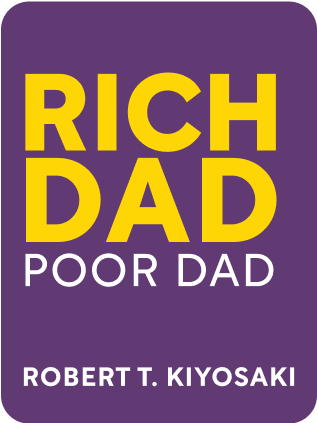

This article is an excerpt from the Shortform summary of "Rich Dad Poor Dad" by Robert T. Kiyosaki. Shortform has the world's best summaries of books you should be reading.
Like this article? Sign up for a free trial here .
What are the Rich Dad, Poor Dad characters? What do the characters teach author Robert Kiyosaki about money?
The Rich Dad, Poor Dad characters each help Robert Kiyosaki learn valuable lessons. While there aren’t many characters in Robert Kiyosaki’s narrative, each of the the Rich Dad, Poor Dad characters show how you can learn to manage money so that you can be secure and financially independent.
The Rich Dad, Poor Dad Story
Growing up in Hawaii in the 1950s, Robert Kiyosaki had two dads. The two dads are the two most important Rich Dad, Poor Dad characters, as they form the basis for Kiyosaki’s financial lessons. Additional Rich Dad, Poor Dad characters include Robert Kiyosaki himself, and his friend Mike.
1. Robert Kiyosaki
When growing up, author Robert Kiyosaki had two dads advising him: 1) a Stanford-educated PhD who followed traditional career thinking, was allergic to risk, and was financially illiterate (the Poor Dad, his biological father); 2) a high school dropout who later built a business empire worth many millions and employing thousands (the Rich Dad, his best friend’s father).
Rich Dad, Poor Dad is one of the best-selling financial books in history, selling over 35 million copies since its publication in 1997.
The book doesn’t teach the tactics of getting rich as much as it does the principles: the mindset and high-level strategies that distinguish the wealthy from the hapless.
Kiyosaki got conflicting advice from both dads on how to manage money, career, and financial risk. In the Rich Dad, Poor Dad story, ultimately he saw more wisdom and results in Rich Dad’s advice, and followed in the Rich Dad’s path. Kiyosaki is the main Rich Dad, Poor Dad character in the narrative portion of the book.
2. Mike
Mike is one of the early Rich Dad, Poor Dad characters. The book starts with 9 year old Robert Kiyosaki, who is frustrated by having less than the rich kids in his school. He commiserates with his best friend Mike, the only other non-visibly-wealthy kid in the school. Bemused, Robert’s dad (Poor Dad) suggests they talk to Mike’s dad (Rich Dad), who owns multiple local businesses and seems to be on a good path.
Rich Dad offers the boys jobs, first for low pay and then for free. After a few weeks of working for free, one day Kiyosaki has an insight – he and Mike open a library to lend out old comic books that the store disposes of.
After some work, they launch with great success. They earn $9 per week over 3 months. They pay Mike’s sister $1 a week for managing the store.
After three months, bullies break into the room, and Rich Dad suggests they shut down the business. But the lesson was learned: by not being paid, they were forced to find opportunities to make money. They avoided being distracted by the short-term carrot. Though Mike isn’t mentioned later in the book, he was a part of Robert Kiyosaki’s early journey in discovering how money works.
3. Poor Dad
Robert Kiyosaki’s biological father was a Stanford-educated PhD who followed traditional career thinking and was financially illiterate. Poor Dad first encouraged Kiyosaki to go talk to Rich Dad regarding his frustratings over being poor.
Poor Dad represents the traditional view on work and money – go to school, get a good job and climb the ladder, prize stability over independence, buy a house, and spend money without a clear long-term plan.
- Most parents belong to this system, so they pass it down to their kids.
- The traditional view worked better in the 20th century, when strong growth and decades-long employment meant stability was a viable strategy. Nowadays, pensions are rarely guaranteed; job security at a loyal employer is rare; professional education and academic success are no longer guarantees for security.
Robert Kiyosaki chooses Rich Dad’s philosophy, and proceeds to work toward financial independence later in his life. Poor Dad shows the path that Kiyosaki doesn’t want to follow; always working for someone else, always in the rat race.
4. Rich Dad
Our of the Rich Dad, Poor Dad characters, Kiyosaki draws the most important lessons from Rich Dad. Rich Dad was a high school dropout and local businessman that employed thousands at his businesses while maintaining financial independence. Rich Dad represents what was then a more contrarian view – work for salary if you have to, but aim for financial independence; have your money generate more money; and take calculated risks boldly.
Robert Kiyosaki covers major lessons from Rich Dad. Most people work 40+ hours a week to earn salaries. Many then take their earnings to 1) buy stuff they think will make them happy (but this is short-lived), 2) save the remainder in a conservative way.
While this ensures some degree of stability, it doesn’t make you rich. And working to earn a pension makes you financially dependent – let alone the risk that pensions won’t be funded decades from now, when you need it.
The counter-intuitive lesson here is this: the rich don’t get rich merely by being paid higher salaries (though this is a great help). They get rich so by owning things. No one on the Forbes billionaire list got there purely with a salary.
The Rich Dad, Poor Dad characters show the different mentalities when it comes to money. While both have merit, the Rich Dad, Poor Dad characters demonstrate how these philosophies play out in real life, and provide valuable lessons.

———End of Preview———
Like what you just read? Read the rest of the world's best summary of Robert T. Kiyosaki's "Rich Dad Poor Dad" at Shortform .
Here's what you'll find in our full Rich Dad Poor Dad summary :
- The key differences in how rich dad and poor dad approached life
- Why it's a terrible idea to buy an expensive house
- How to overcome your own mental blocks to become wealthy for life






